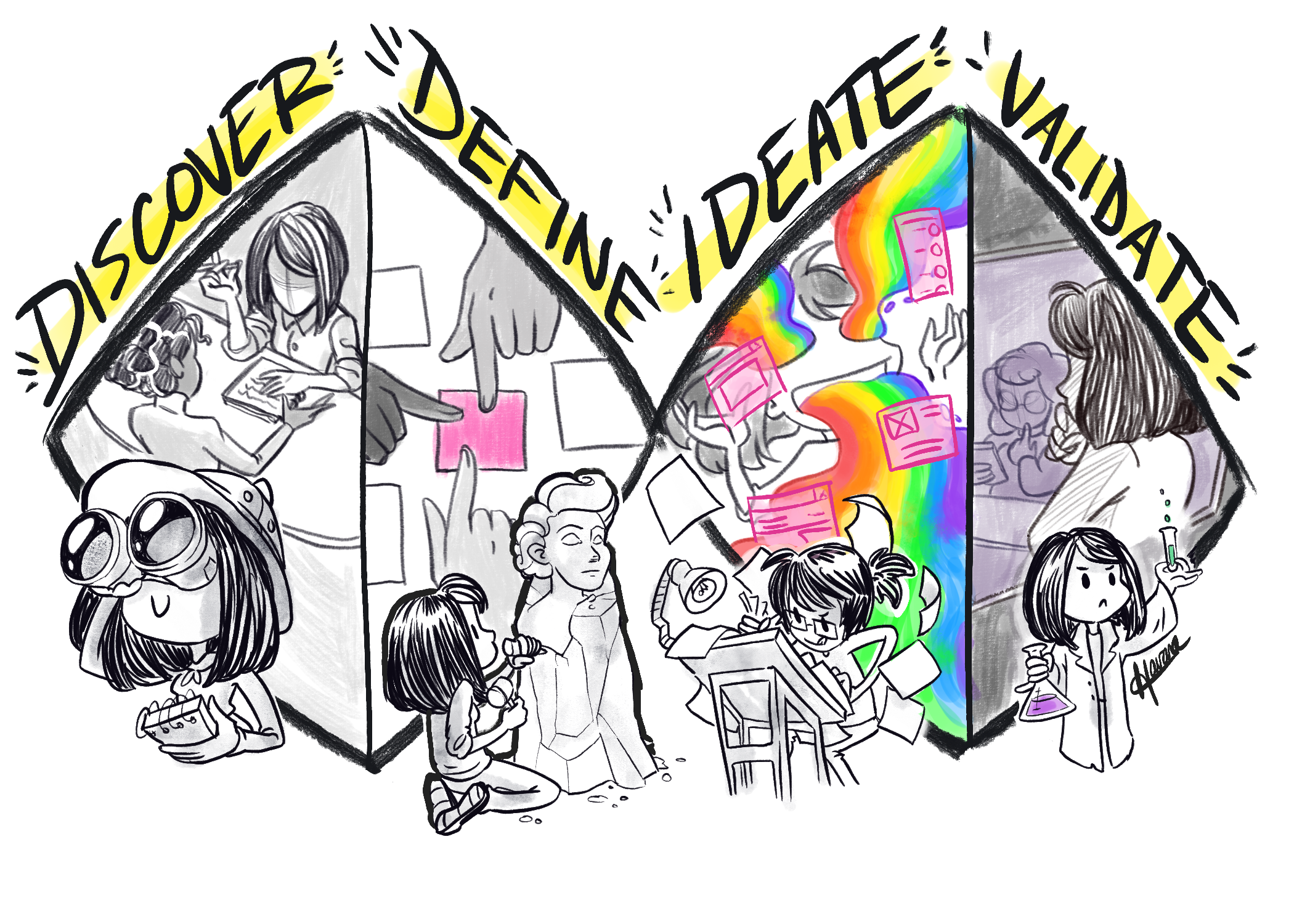Havana’s UX Process
Process can vary a lot based on whether or not requirements are defined up front, whether we have access to users, what resources we have, and deadlines. However, below are my personal guiding principles with every project that I have consistently lived by.
“If you’re not checking, you’re guessing.”
I don’t like wasting time on projects that ultimately don’t get used or don’t matter. In the past, I have scrutinized requirements: where did it come from? Who needs it? Why do they need it? Is it mission critical? Early product discovery interviews with users, customers, subject matter experts (SMEs) are my favorite part of the process. I also like to keep in touch with those subjects to later validate prototypes and designs.
My past experience as a salesperson instilled initiative and resourcefulness in finding users and SMEs. I have recruited subjects for user research through cold-calling, cold-emailing, or simply set up tests in coffeeshops. It’s nerve-wracking, but necessary!
Read about how I ran a workshop with front-line customer service reps to gather weeks of research work in 2 hours. Or listen to me talk about it on UX Hustle!
“If I had an hour to solve the problem, I would spend 55 minutes defining the problem and then five minutes solving it.”
Those early product discovery sessions are so critical because they show you the user’s process, goals, objectives, and pain points. I come into these sessions not seeking solutions but extracting the specific problem statements. Otherwise, it’s too easy to fall into a tunnel vision on one solution.
This is the key to innovation. As Henry Ford said, “If I had asked people what they wanted, they would have said faster horses.” It’s important to understand that the real need was speed.
Read about how I applied this when creating the most complex and most used component in one company’s Design System: Designing Tables for Reusability.
Whose perspectives are we not considering?
When Siri first came out, I immediately shrugged it off because I knew there was just no way it would work for my parents, who had accents. Diversity and inclusion lead to better products, period. I prioritize my education on marginalized groups so that I can better evaluate: whose perspectives are we not considering? In what ways can this design discriminate against people?
My B.A. in International Affairs has taught me that multiple models can be right and to never assume that your mental paradigm is “the normal” for others.
As a simple example, I worked on a user role management interface and one of the constraints was that users could not change their names. I raised the issue of maiden names and then worked with the backend developers to brainstorm solutions.
Another thing most folks don’t think about is the Asshole Contingency: how might this feature be abused? Read this case study for more.
Speak up! No one can read your mind.
My 15+ year relationship has taught me that learning how to communicate is a lifelong course. I spent so much of my life being shy but now I am known for my directness. If I am confused, I’ll ask. If something is ineffective, I’ll question it. If injustice is happening, I’ll uncover it. If you prefer someone who stay quiet, then I am not going to be a great addition to your team.
A colleague once advised me to hide a mistake I had made so that the “group won’t look bad.” I decided to go straight to the top to fess up and we were able to solve the problem in 30 minutes and then come up with a new process to prevent anyone from making that mistake again. I’m glad I followed my gut.
“If more truth is spoken in hallways than in meetings, then there is a problem,” says Ed Catmull in Creativity, Inc. We cannot solve problems, alleviate pain, or improve if we simply stay quiet.
Read about my hard lesson in speaking up here.

“If more truth is spoken in hallways than in meetings, then there is a problem.”
— Ed Catmull, Creativity Inc.
Havana’s UX Playbook
Having been at big companies, small companies, companies with decent UX infrastructure, companies that struggle to understand what UX is, I have developed a go-to toolbelt of methodologies that have always helped me wrangle chaos into order. Below are a few:
Thoughts on Product and UX
I have a Youtube Channel! On there, I share my thoughts on product and UX. Below you can get my thoughts on the common obstacles of the UX process and a quick guide on how to do user testing if you are a designer.





